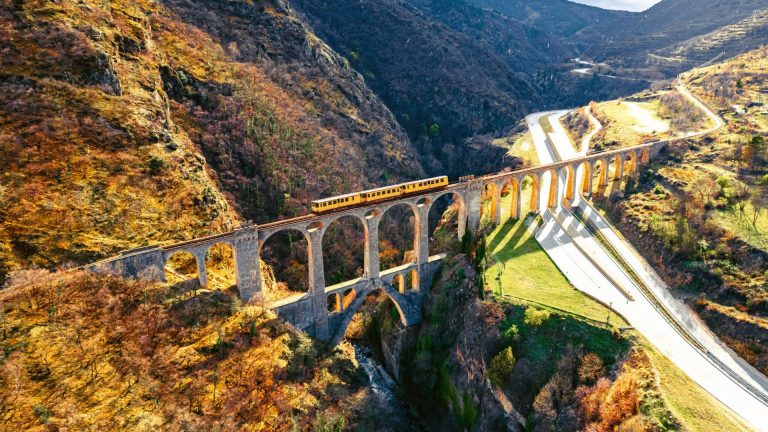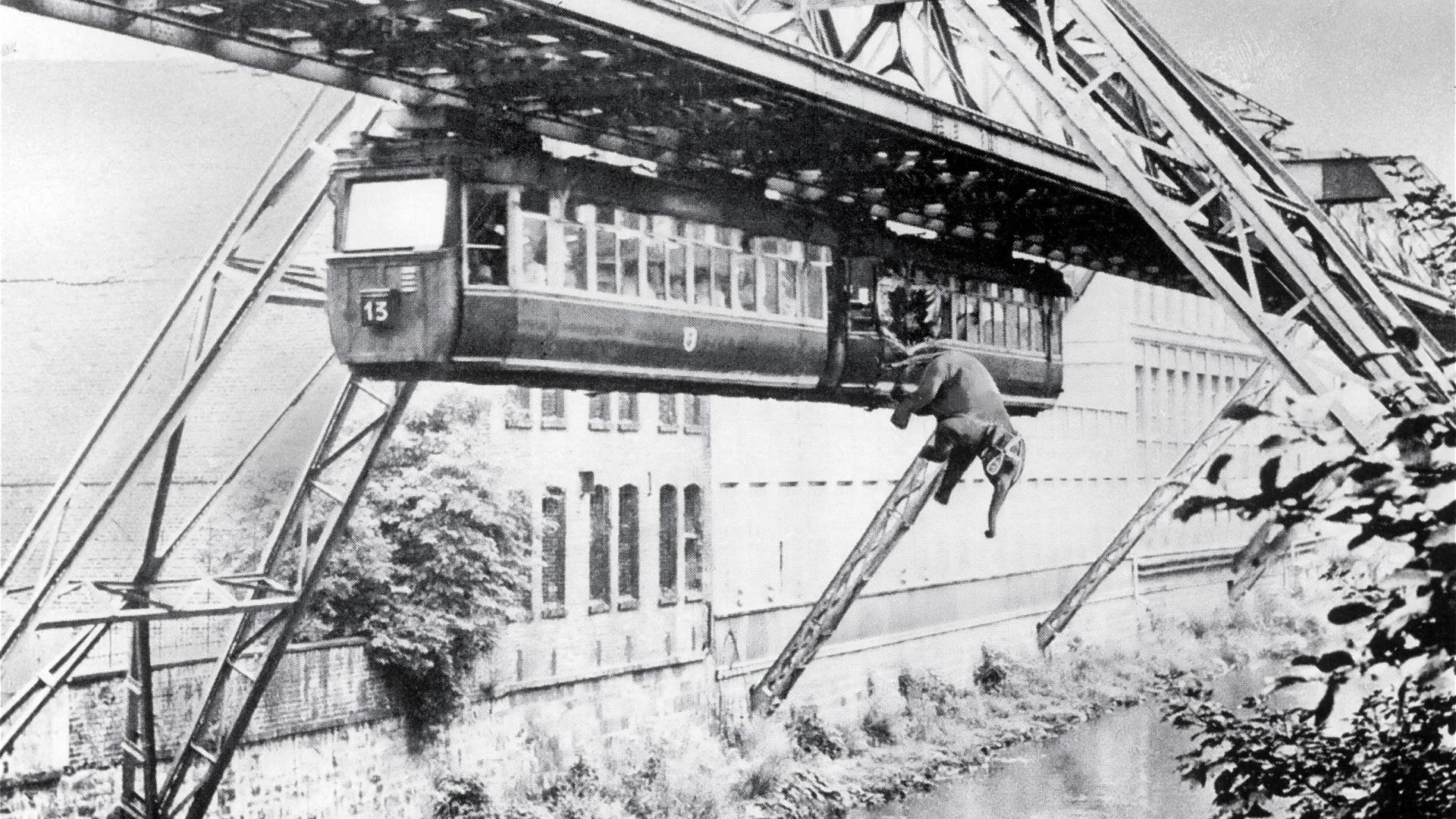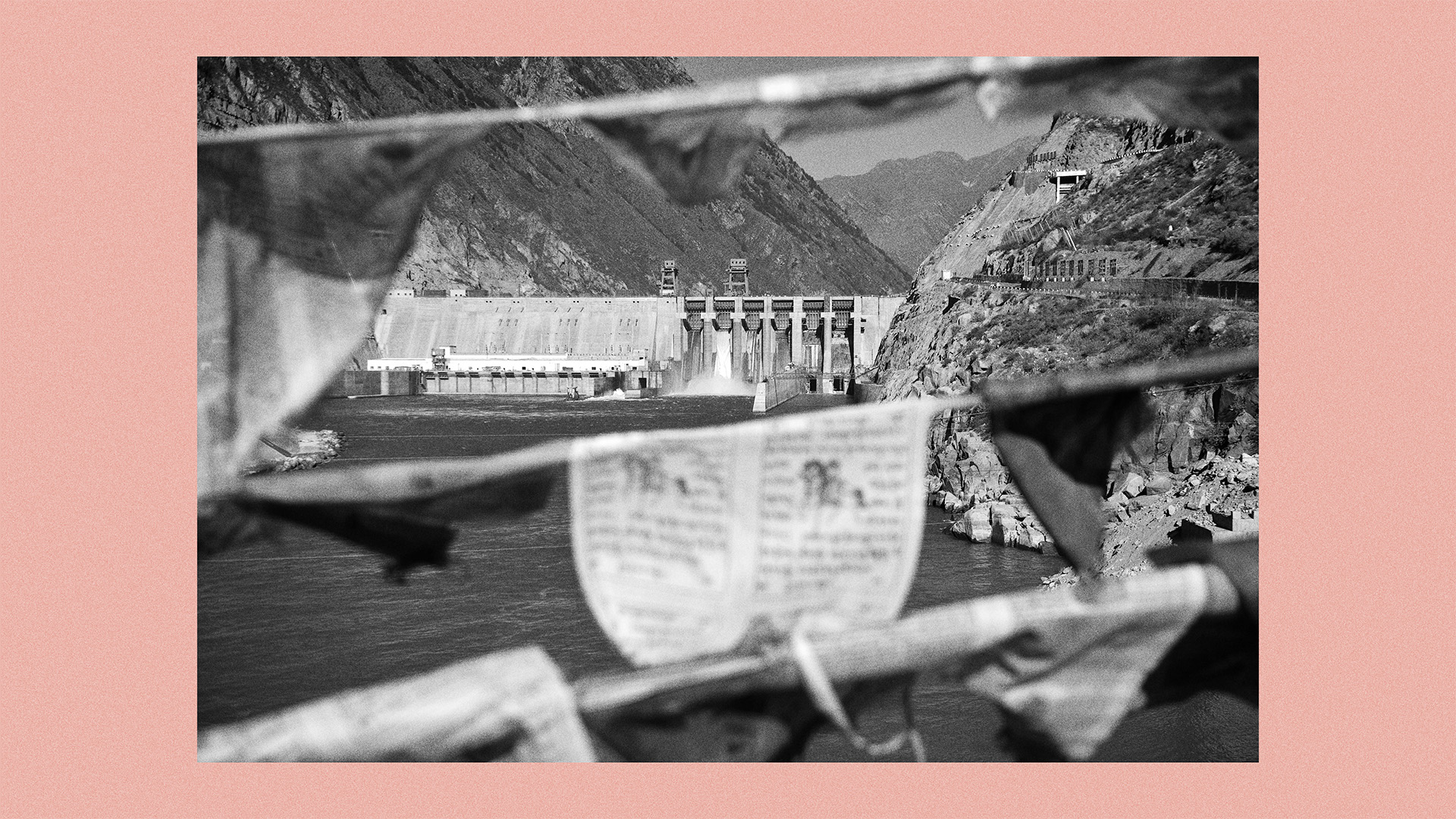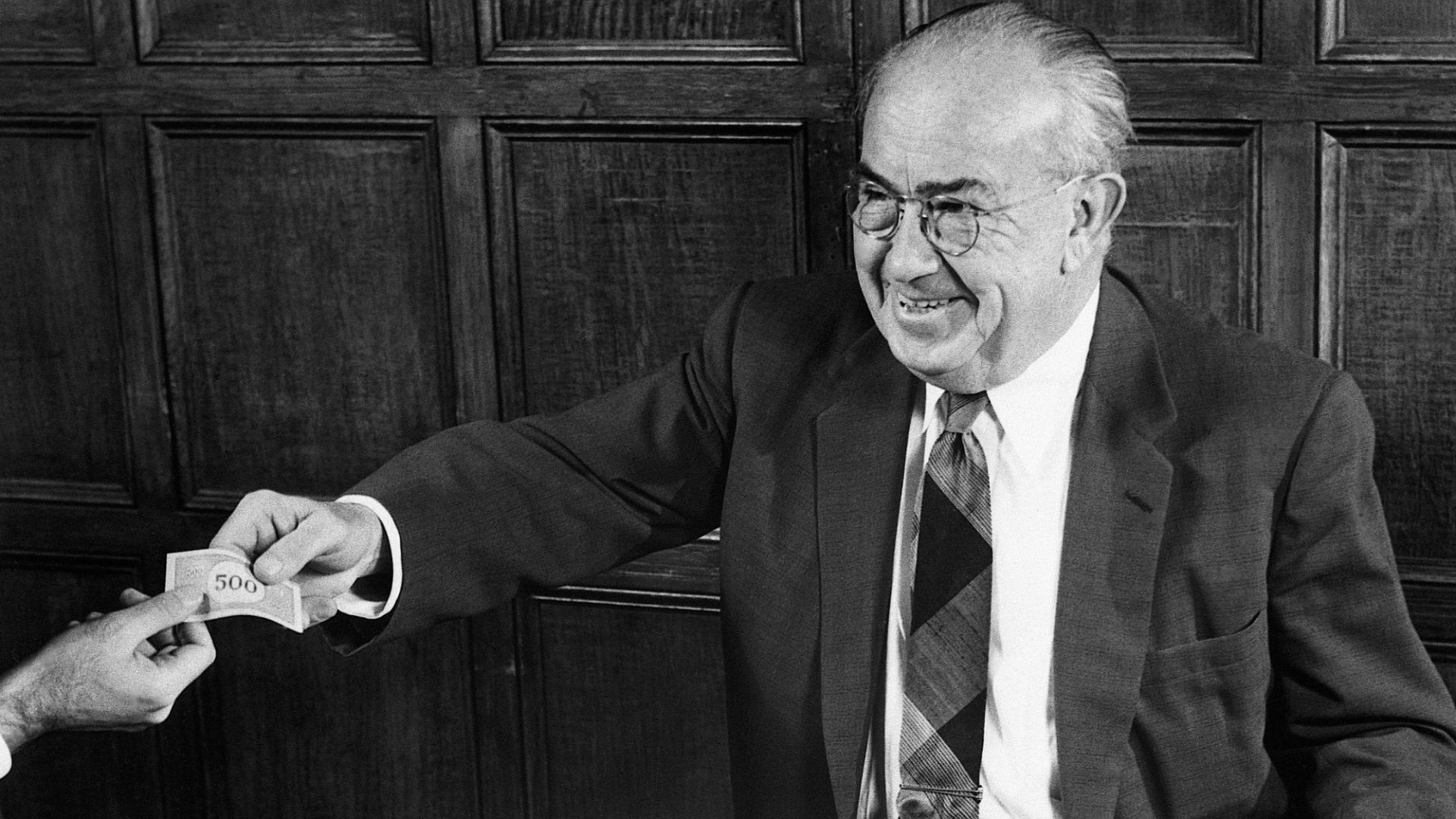Tuffi the elephant wasn’t happy. In an attempt to promote its forthcoming show in the western German city of Wuppertal, the Althoff Circus had loaded her on to the Schwebebahn, the city’s monorail.
The local authorities were only too happy to welcome Tuffi. This was 1950, and they figured a visit from a weighty mammal would not only brighten the postwar gloom, it would demonstrate once and for all that the Schwebebahn’s pendulous carriages, dangling from their overhead beam, were completely secure.
But Tuffi was having none of it. Nauseously swaying in mid-air and with the cameras of the paparazzi clicking in her face, she panicked, pushed her way through one of the carriage doors and tumbled into the River Wupper.
Tuffi was lucky. She landed in soft mud, which cushioned her fall and, despite plummeting nearly 10 metres, splashed her way to the bank. Whether the circus or the railway company benefited from the stunt, it’s hard to say – the city’s head of transport was fined 450 marks – but the ignominious episode certainly amplified the legend of the world’s oldest monorail.
Schwebebahn translates as “floating railway”, although it is more accurately described as a suspension railway. Unlike standard railways, its carriages hang from a single rail above. Yet despite its age – it was constructed between 1898 and 1903 – it is no anachronism. It appears as futuristic now as it must have done when it was opened.
And not only does it avoid the need to skirt around structures, and doesn’t require any tunnels or cuttings, the views are great too. Swooping over roads and buildings and traversing the River Wupper, it provokes conflicting opinions among visitors to Wuppertal. It’s either a breathtaking and spectacular feat of engineering that would grace any 21st-century city or a Meccano-esque eyesore despoiling the natural beauty of the valley.
Wuppertalians, however, adore it. Or at least they do today. Perhaps unsurprisingly, the Schwebebahn was a product of the rapid industrial expansion – known as Gründerzeit – that Germany experienced at the end of the 19th century. The textile industry of the Wupper Valley had grown exponentially and the once-small settlements along its length had developed into a straggly urban expanse. Forty thousand new residents needed a public transport system.
“When it was first proposed, there was robust debate in local newspapers and objections to ‘the monster on stilts’,” explains Rainer Mertens, deputy director of the Deutsche Bahn railway museum in Nuremberg. “But the Wupper Valley was in desperate need of a transport system and ultimately the locals came out in favour.”
Entrepreneur and engineer Eugen Langen had already offered his system to Munich, Berlin and Breslau, where it was rejected, but the Wupper Valley embraced it. The unique geography of their environment lent itself perfectly to a suspended electric railway, rather than a steam track on the surface taking up more of the limited ground space.
Suggested Reading

Is Interrail now a fail?
“It effectively has an ‘ecological niche’,” says Mertens. “A perfect means of urban transport in an area of difficult topography. That it hasn’t been copied elsewhere doesn’t mean it’s a poor system. For the place in which it is situated, it is sublime.”
Two years after Langen was given the go-ahead in 1896, work began. An initial section was opened in 1901 and Kaiser Wilhelm II had the honour of being the first passenger to undulate gently beneath the pylons inside a specially built royal carriage. By the time the full line of 13.3km plus turning loops opened in 1903, around 20,000 tonnes of steel had been used to create the sinuous, meandering railway, with its 20 art nouveau stations.
It was an immediate hit with locals. Train lengths were soon increased from two to six carriages and the railway is single-handedly credited with merging the once separate towns of Barmen, Elberfeld and Vohwinkel into what is now called the city of Wuppertal.
And despite the stunt by the local council to show how robust the monorail was, the Schwebebahn already had an immaculate safety record prior to Tuffi. Indeed, only serendipity prevented her from becoming its first fatality.
In 1917, two carriages collided resulting in minor injuries – the same happened in 1997 – and in 1968, a truck on the road below hit a pylon. The railway wasn’t damaged but the pylon bases were subsequently set into concrete as a preventative measure.
By 1999, it was regarded as Germany’s safest form of public transport. But tragedy eventually struck in April of that year. Overnight maintenance workers accidentally left an iron hook attached to the track near Robert-Daum-Platz station. The first eastbound train of the day struck it and plunged into the Wupper. Five people died and 47 were injured.
Significantly the judicial inquiry found that the disaster was not caused by a technical or mechanical failure of the railway, but by negligence and lack of supervision. This was crucial to public confidence and passenger numbers quickly returned to previous levels when it reopened two months later. It remains the railway’s only fatal accident.
The train fleet was replaced between 2016 and 2018, following a complete overhaul in 2010 of the supporting pylons which were showing signs of metal fatigue.
Today, at three-minute intervals, the cars oscillate gently over the town and the river, swinging delicately outwards as they take the curves at 27 kilometres per hour, travelling the half hour between the two termini at Oberbarmen in the east and Vohwinkel in the west, exactly as they first did in 1903. It is used by 80,000 passengers a day and a day ticket costs €7.60.
The Schwebebahn has inspired poets, novelists and directors thanks to its enduring sci-fi aspect. The Zionist writer and political activist Theodor Herzl refers to it in his 1902 novel Altneuland (Old New Land) and it features in Wim Wenders’ 1974 film Alice in den Städten (Alice in the Cities). He returned to it again in his 2011 movie Pina.
A basalt statue created by artist Bernd Bergkemper now stands at the exact spot where Tuffi landed 75 years ago. There’s also a local milk brand named “Tuffi”.
So if you visit her memorial, you’ll have something to toast her with.




